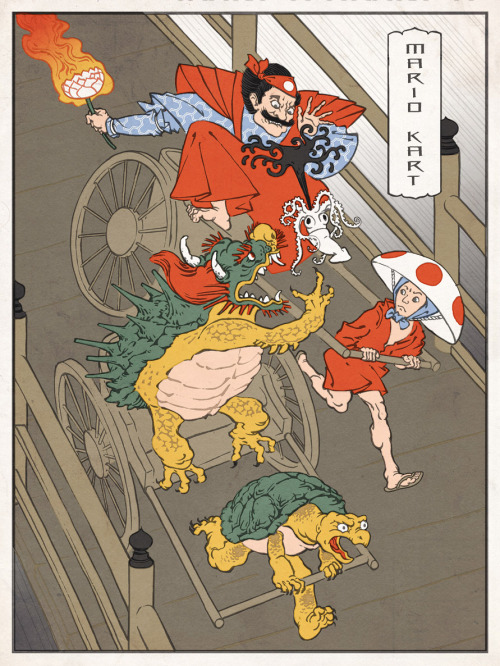Today’s question: what tools are there for teaching about computer graphics and/or computer games? I don’t have a definitive answer, but I have a little experience with a few resources and know of others. That said, I haven’t sat down with more than two of them for any serious amount of time. Comments are most welcome, especially for pointers to better overviews than this!
I’ll list these roughly from the more basic to those for budding programmers and indies. That said, I think some languages, e.g. Processing, are easier to get into than the UI-driven systems, but some understanding of programming is needed. I’ve also ignored some famous examples like Logo, as it feels a bit crusty and limited to me. But, that’s me—let me know if you have a great counterexample.
Game Maker: My experience with this one is trying it with my younger son, and later Cornell using it in a 20 hour digital game design workshop for high-school students. It’s much more about games than graphics, graphical elements are 2D sprites and backdrops. Most of the focus is on events and constraints, as you might guess. Very UI oriented, no programming language involved per se – the UI controls are essentially a programming language of a sort. I have The Game Maker’s Apprentice, which is good in that it gets the person involved quickly, but bad in that little understanding gets transmitted early on (“now set this UI control to do this, now load that file there, now hit ‘run’; if it doesn’t run, walk through all the instructions carefully again”). From Amazon reviews, the book Getting Started in Game Maker might be better. There’s lots of example games and web support. Cost: free Lite version and trial Pro version, cost for Pro version (which you want) is $20.
Multimedia Fusion 2: this is an expanded and rebranded version of the company’s “Games Factory 2” product that includes all its functionality. It looks similar to Game Maker, but targeted for a somewhat more professional audience (and at a higher cost) overall. That said, there is a book for it, Game Creation for Teens. Cost: free trial download from 2008, lowest street price I saw for Multimedia Fusion 2 was $83.
Flash: Adobe’s popular animation & game programming system, famously unsupported by the iPad. Back some years ago the local science center used Macromedia Flash to teach grade-school kids about basic Flash animation. Now Adobe Flash Professional CS4 is used to create Flash. From what little I’ve read, the interface is daunting, but it’s actually pretty easy for beginners to get going. Animation is something that can be done purely with graphical tools, Actionscript 3 is a language for serious interactive applications. There’s of course a huge number of books, forums, and other online support. Cost: as low as $200.
Flixel: I’ve heard this mentioned twice as a worthwhile development resource for Flash. It provides some useful base classes in Actionscript 3 for making games, along with tutorials, a forum, etc. Cost: free.
Pygame: This is the first of a few language-oriented resources. Pygame is a bunch of modules to help in writing games in Python. One friend said he got a simple game running in less than two hours from download (but that’s him…), another acquaintance wasn’t so wild about it as he hit its limitations. 2D oriented, though there’s a few 3D experiments. This sounds like a pretty good, and super-cheap (free!), way to introduce kids to programming. I recall an article in CACM or IEEE Computer a year or so ago about Python, and it made an excellent point: Python is one of those great languages that is made for people who have never programmed before. Like Perl, it provides the ability to program and get something done quick without a lot of clutter, and so is a better candidate for the first programming language taught, not Java. Let the programmer have fun getting things done, then teach them about more elaborate computer science concepts and why these are useful. Python is pretty easy to learn: Andrew Glassner has a great introductory page – in a few hours you’ll know the basics. But I digress… Anyway, Pygame has lots of users, many of the projects are open source, there’s even a second edition of a free professionally-produced book about Pygame. Cost: free.
Processing: OK, if you’re sick of hearing about game programming resources, here you go. This is a little language suited for making cool 2D images. Key basic graphics concepts—transforms, curves, image manipulation—are encapsulated. Basic interaction is also a snap. It has a 3D component, but that part is fairly weak. I’ve played with it, it’s fun. Not meant for games; nonetheless, it’s possible. Much online support, and there are two popular books, here and here (the second has lots of additional material online). Cost: free.
Blitz Basic: I’ve heard of this one from a few people but have no direct experience. Definitely about programming, it uses BASIC, but enhanced with functions and types. It looks pretty full-featured, e.g. there’s joystick and networking support. BlitzPlus is the Windows 2D version, BlitzMax also runs on Macs and Linux, Blitz3D adds 3D support: camera, lighting, texturing (including bumps), CLOD terrain, etc. There’s an SDK for interfacing the 3D engine with C++, C#, etc. Manuals are online, and there looks to be a healthy user community. There’s a German version of the website. Cost: free trials of all, prices range from $60 to $100 per product, with more for add-ons.
XNA: This is something of the 800-pound gorilla for programming-related graphics education. As an example, some teen programmers in the Cornell workshop were using XNA as the next step beyond Game Maker. A Microsoft initiative, it’s partially aimed at students and hobbyists. The base language is C# (Java on steroids, if you haven’t used it). There are lots of element and audiences for XNA, Wikipedia also covers the area well. There are many XNA resource sites and books out there (though I was sad to see Ziggyware is no more). Cost: free for the most part, depending on what you’re doing.
Ogre: Begun about a decade ago, this is from all reports a pretty nice graphics engine. It supports a huge number of effects and areas (I know developers who have consulted the codebase for ideas). There are lots of add-on libraries. It’s great for deep-down serious graphics education; Ogre is entirely open source (MIT license), so everything can be examined. Cost: free, and free licensing.
Unity: You’ve now definitely entered the Indie game developer zone. A 3D games development system I’ve heard mentioned by others as a way of learning. Multiplatform, now including the iPhone. Cost: free base version and trial of Pro version, which costs $1499; other pricing for iPhone version. There’s a book. Licensing for Indies has become free.
UDK: The Unreal Development Kit is the most popular game engine used for game development. Cost: free to download full version, 530 Mb of fun. Licensing cost: if you have to ask, you can’t afford it.
Torque: Torque is the second most popular development platform for game creators. For Torque, two versions exist, 2D and 3D. Three books are available on this engine. Cost: $250 for 2D, $1000 for 3D version, but educational pricing can be arranged.
Whew! OK, what did I forget? (Make sure to read the comments—some excellent additions there.)
Update 2/6/2010: Kodu, from Microsoft. For grade schoolers, it uses a visual language. Surprisingly, it’s in 3D, with a funky chiclet terrain system. Another interesting graphics programming tool is NodeBox 2, now in beta. It uses a node graph-based approached, see some examples here.

